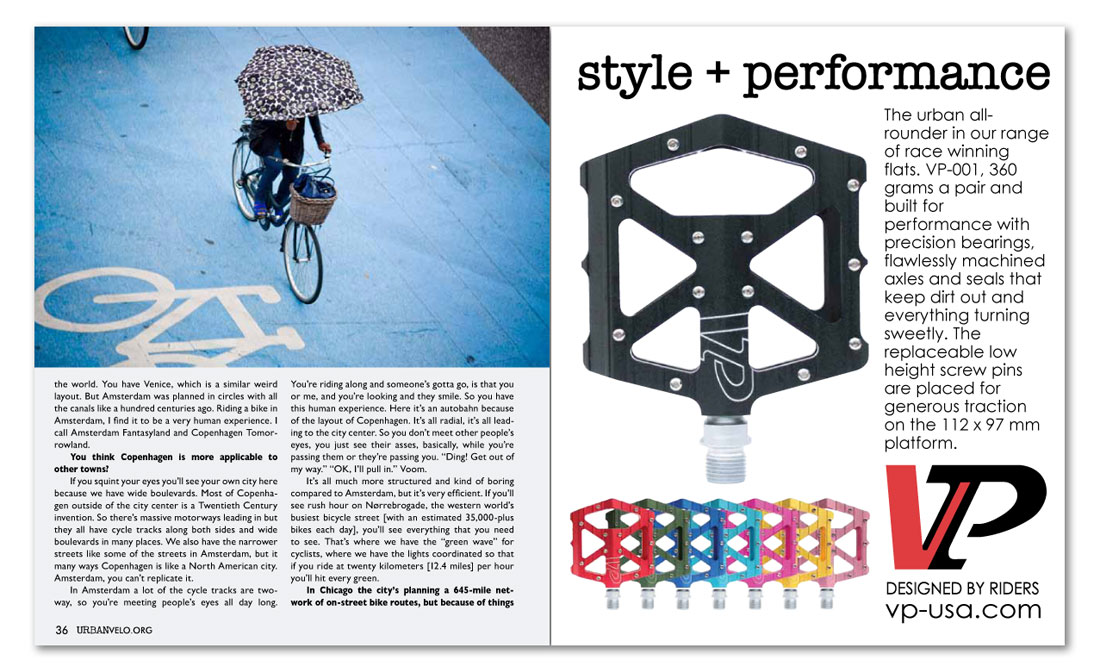


the world. You have Venice, which is a similar weird layout. But Amsterdam was planned in circles with all the canals like a hundred centuries ago. Riding a bike in Amsterdam, I find it to be a very human experience. I call Amsterdam Fantasyland and Copenhagen Tomorrowland.
You think Copenhagen is more applicable to other towns?
If you squint your eyes you’ll see your own city here because we have wide boulevards. Most of Copenhagen outside of the city center is a Twentieth Century invention. So there’s massive motorways leading in but they all have cycle tracks along both sides and wide boulevards in many places. We also have the narrower streets like some of the streets in Amsterdam, but it many ways Copenhagen is like a North American city. Amsterdam, you can’t replicate it.
In Amsterdam a lot of the cycle tracks are two-way, so you’re meeting people’s eyes all day long. You’re riding along and someone’s gotta go, is that you or me, and you’re looking and they smile. So you have this human experience. Here it’s an autobahn because of the layout of Copenhagen. It’s all radial, it’s all leading to the city center. So you don’t meet other people’s eyes, you just see their asses, basically, while you’re passing them or they’re passing you. “Ding! Get out of my way.” “OK, I’ll pull in.” Voom.
It’s all much more structured and kind of boring compared to Amsterdam, but it’s very efficient. If you’ll see rush hour on Nørrebrogade, the western world’s busiest bicycle street [with an estimated 35,000-plus bikes each day], you’ll see everything that you need to see. That’s where we have the “green wave” for cyclists, where we have the lights coordinated so that if you ride at twenty kilometers [12.4 miles] per hour you’ll hit every green.
In Chicago the city’s planning a 645-mile network of on-street bike routes, but because of things
VP